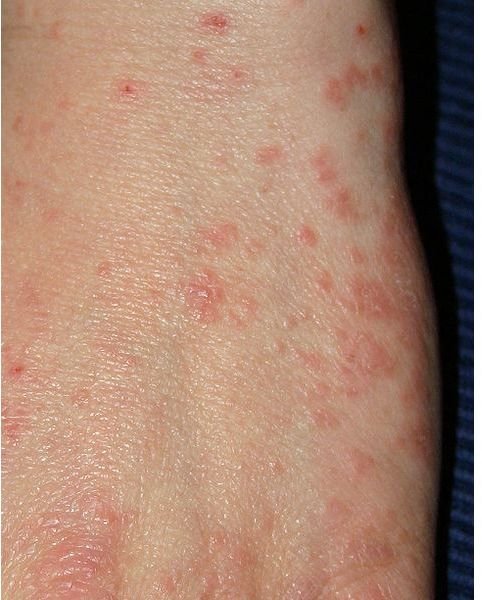An Answer to the Medical Question: What Does Scabies Look Like?
Scabies is caused by Sarcoptes scabiei, a very small burrowing mite. In the area it burrows, intense itching will occur. Scabies is also contagious and is easily spread through close physical contact. This skin condition is easily treated, however, especially when patients seek treatment as soon as symptoms occur. If patients want to be prepared they should ask themselves, what does scabies look like?
Symptoms of Scabies
Before you ask yourself, what does scabies look like, it is also important to know what the other symptoms are. The main symptoms include itching that is often severe and even more severe at night. The itching is caused by an allergic reaction to the mites, their waste, and their eggs. Irregular, thin burrow tracks composed of tiny bumps or blisters on the skin are also often present. In adults these burrow tracks usually occur on areas of the body where the skin folds, such as between the fingers, on the shoulder blades, in the armpits, on the knees, around the waist, on the buttocks, along the insides of the wrists, around the male genital area, on the inner elbow, around the breasts, and on the soles of the feet. In children the burrow tracks usually occur on the scalp, the soles of the feet, on the face, on the palms of the hands, and on the neck.
Scabies look like small red blisters and bumps. They are often referred to as tunnels or burrows ranging from 2 millimeters to 15 millimeters long. They often appear as thin brown, gray, or red lines. They are often difficult to see and are sometimes mistaken for stretch marks.
Causes of Scabies
Scabies occurs when the mites burrow just beneath the skin. This then creates a tunnel in which they lay their eggs. In 21 days, the eggs mature and new bites a born which make their way to the skins’ surface where they then mature and then spread to other areas or to other peoples’ skin.
Scabies Treatment
Treatment revolves around using medications to eliminate the infestation. There are many lotions and creams available and these are typically applied from the neck down, all over the body, and not just on the affected areas so that areas that are not showing symptoms never will. These topical medications should always be left on for at least eight hours and often need to be applied more than once a day. Since scabies is so contagious everyone close to the infected person, especially those living in the house, may also have to be treated even if they are not showing any signs of scabies.
These medications used are meant to kill the mites and not alleviate the itching. If the itching is intolerable, it is best to ask your doctor about available anti-itching creams that will not adversely interact with the scabies medications you are taking. The most commonly prescribed medications include permethrin 5 percent, crotamiton, and lindane.
Resources
Mayo Clinic. (2010). Scabies. Retrieved on March 23, 2010 from the Mayo Clinic: https://www.mayoclinic.com/health/scabies/DS00451
Medicine Net. (2010). Scabies. Retrieved on March 23, 2010 from Medicine Net: https://www.medicinenet.com/scabies/article.htm#1whatis
Image Credits
Scabies: Steschke – Wikimedia Commons
